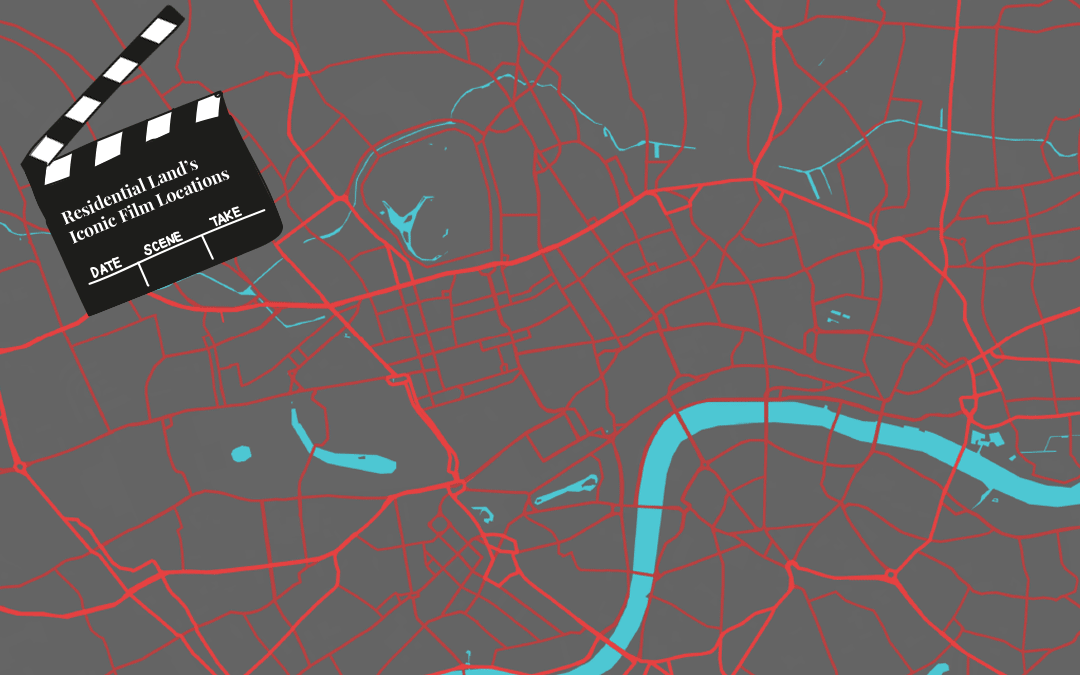London is one of the most instantly recognisable cities in the world, so it stands to reason that filmmakers have been capitalising on its abundant character for quite some time.
Here we take a look at six iconic film scenes from the last three decades, and examine how London played a crucial role in making each of them memorable.
Four Weddings and a Funeral – South Bank
No list of films set in London would be complete without one (or perhaps even two) Richard Curtis productions. 1994’s Four Weddings and a Funeral is the one that started it all, and perhaps its most memorable scene takes place on London’s South Bank, with Hugh Grant running towards Andie MacDowell in a baffling shorts-and-floral-shirt combo, so that he can, er… um, breathlessly declare… er, in the words of David Cassidy, um, that he, uh… thinks he loves her.
His declaration was shot outside the BFI Southbank cinema, in the shadow of Waterloo Bridge – which you’ll find often provides shelter to an ad hoc market of trestle tables piled high with second-hand books. Directly to Andie McDowell’s right (or Hugh Grant’s left) is the Southbank Undercroft, which plays host to a lively community of skaters and graffiti artists who frequently conjure crowds from the passing foot traffic.
Notting Hill – Portobello Market
Five years later, Richard Curtis’s Notting Hill made London one of its central characters; the film opens with a vibrant montage of the eponymous West London district, with market traders selling vegetables and antiques, tattoo parlours giving drunk men tattoos that say “I love Ken”, and a radical hairdresser that “makes everyone look like the Cookie Monster, whether they like it or not.”
One of the most spectacular sequences in the film, however, comes after Hugh Grant’s hapless William seems to have scuppered his romantic chances with Julia Roberts’ elusive movie star. As William walks through Portobello Market, the seasons change magically around him, marking the passing of what must be one of the longest years of his life.
Withnail & I – Regent’s Park
1987’s Withnail & I tells the bleakly hilarious, endlessly quotable story of two down-on-their-luck actors living in squalor in a pre-redevelopment (or post-apocalyptic) version of Camden. To escape the oppression of their surroundings, the pair go on “holiday by mistake”, driving into the countryside in a clapped-out Jaguar to stay in a clapped-out cottage.
It’s the ending that is most affecting, however, and – as a result – perhaps the film’s most iconic moment. Laid low by his friend landing a big role and moving out of their flat, the acerbic Withnail swigs from a bottle of wine in Regent’s Park, hanging off a fence as he delivers Hamlet’s “What a piece of work is man!” monologue to a pack of uncomprehending wolves in London Zoo.
Harry Potter & the Philosopher’s Stone – Leadenhall Market
The first in the eight-strong juggernaut that is the Harry Potter series of films, The Philosopher’s Stone, primarily concerns itself with removing Harry from the clutches of his deeply unpleasant aunt and uncle, before inducting him into the Hogwarts School of Witchcraft and Wizardry. And what do you need to do before starting at a new school? Go shopping for your school uniform.
Hagrid takes Harry shopping in Diagon Alley – the one-stop marketplace for all your wizarding needs – to buy a wand and whatever else a small magical lad might want. The entrance to Diagon Alley, as everyone knows, is the Leaky Cauldron pub, the distinctive doorway of which is now a Leadenhall Market opticians. Dating back to the 14th century, Leadenhall is one of London’s oldest markets, and it also lent its grandeur to a number of Diagon Alley interior and exterior shots.
28 Days Later – Westminster Bridge
Danny Boyle’s 2002 non-zombie zombie film single handedly reinvigorated the genre by introducing the concept of an infection that makes people extremely quick and angry – a far cry from the stereotypically lumbering undead. The other striking element of the film was its spectacular use of London as a location.
When Cillian Murphy emerges from hospital after the film’s prologue, he finds the capital completely and unnervingly deserted. Staggering across an uncharacteristically empty Westminster Bridge, down Horse Guards Parade and The Mall, the filmmakers created a deeply uncanny atmosphere by filming in the very first morning light, before the streets had filled with people.
Paddington – Paddington Station
Few characters are tied as closely to a sense of place as Michael Bond’s Paddington Bear, and the 2014 film adaptation preserved this link beautifully with a heartwarming and wonderfully funny scene set in Paddington Station.
Just arrived from Darkest Peru, the only attention the as-yet-nameless bear receives is from a gathering of pigeons interested in the marmalade sandwich storage capabilities of his hat. The evening commuters bustle past him, oblivious to his plight… until the Browns show up, name him after the station, and over the next hour and a half reveal just how welcoming a city London can be.
